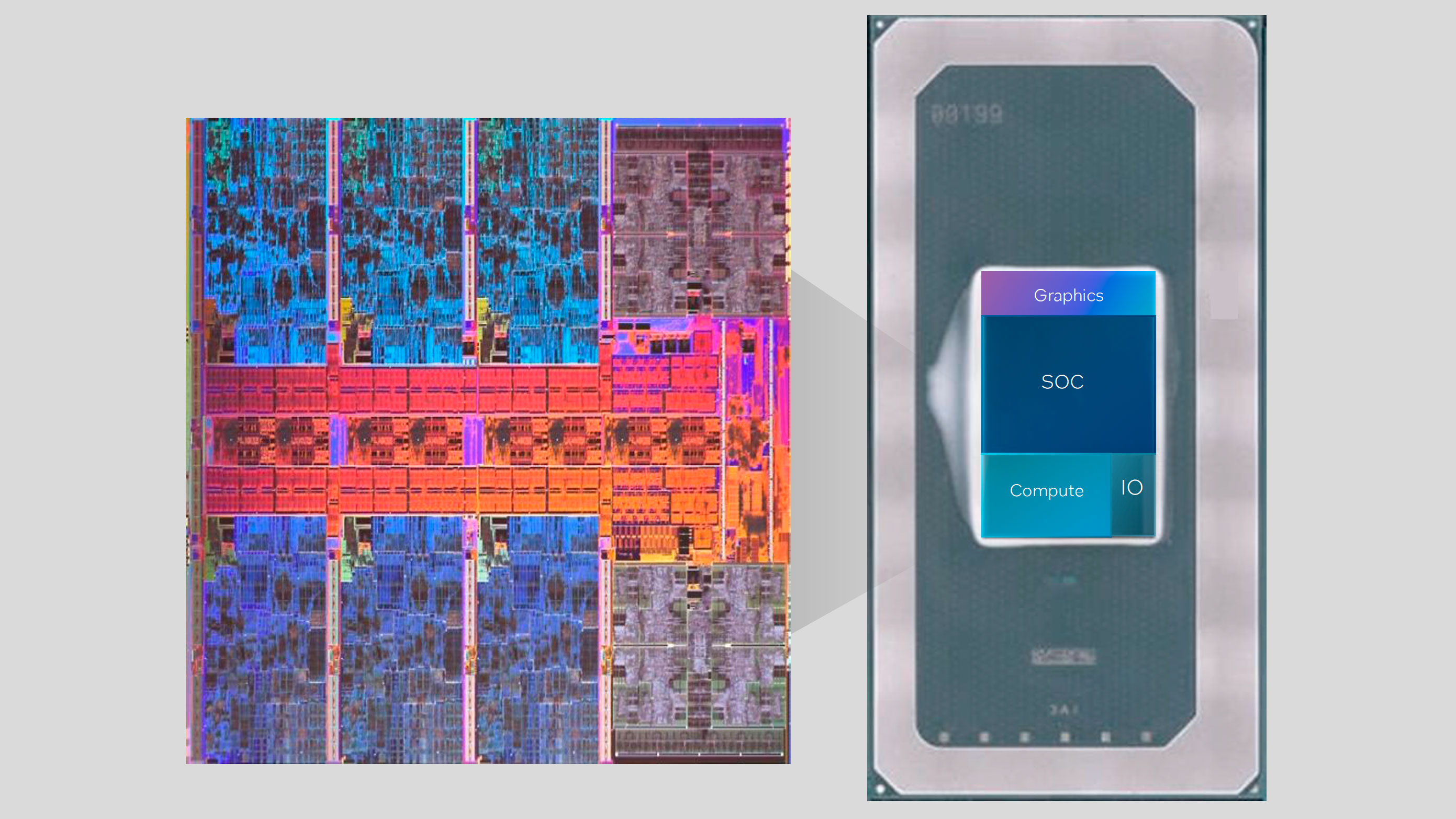Intel allegedly experimented with dual CPU chiplet configuration on Meteor Lake engineering sample, but shipping models only have one CPU chiplet

Intel may have been planning to create a Meteor Lake processor with two CPU tiles, as photos of Meteor Lake-P engineering samples reveal. Hardware leaker @yuuki_ans shared a side-by-side comparison of a "normal" Meteor Lake-P CPU and a "thermal test" version with two CPU tiles instead of one.
MeteorLake-P:-Normal Sample DieandThermal test Sample Die pic.twitter.com/Laxft2dodmDecember 18, 2023
The images of the two Meteor Lake-P samples, shared on X (click to expand), look nearly identical except for one clear difference: the thermal test variant has two tiles where the single CPU tile (compute) would normally be. It strongly implies that Intel was interested in using two CPU tiles rather than just one. However, that doesn't mean that the tiles on this particular engineering sample are functional; after all, it was just for thermal testing.
We can only speculate what these two CPU tiles would have contained if Intel had gone ahead with this design. It could have taken a cue from AMD and used two identical tiles, just like 12- and 16-core Ryzen CPUs. However, the tile on the right is about 10 to 15% wider than the one on the left, which implies that these are actually two different tiles. In that case, it would be more likely that one tile has the P-cores and one has the E-cores.
If Intel had made separate tiles for P- and E-cores, it could have used different nodes for each. While the P-cores would likely have stayed on the Intel 4 process, the E-cores could have ended up on TSMC's 6nm. Intel already put two low-power E-cores on the SoC tile, fabbed on TSMC's 6nm, so putting more E-cores on its competitor's process node wouldn't be out of left field.
Meteor Lake-P is one of the variants of the Meteor Lake architecture that Intel hasn't released yet, but it is rumored to be canceled. It's not clear how Meteor Lake-P would differ from Meteor Lake-H and -U, which just launched on December 14. Raptor Lake-P had six P-cores and eight E-cores, which is how many cores Meteor Lake-H has on its CPU tile.
Could Intel's apparently-axed Meteor Lake-P chips for desktop PCs have employed a dual-CPU tile design? That's anyone's guess. In either case, it is clear that Intel has experimented with different CPU tile arrangements, even if only to test out smaller clusters of cores.
Get Tom's Hardware's best news and in-depth reviews, straight to your inbox.

Matthew Connatser is a freelancing writer for Tom's Hardware US. He writes articles about CPUs, GPUs, SSDs, and computers in general.